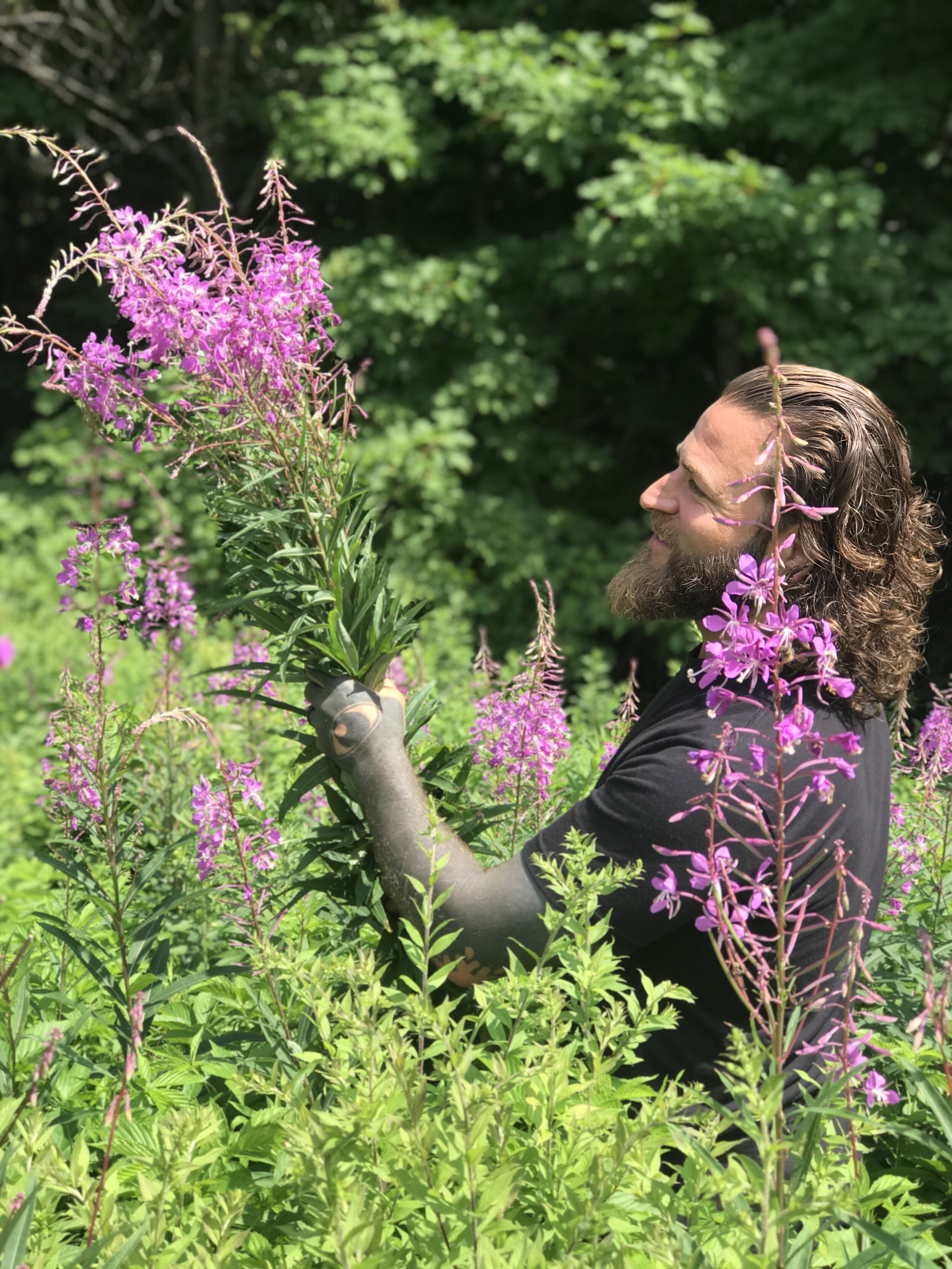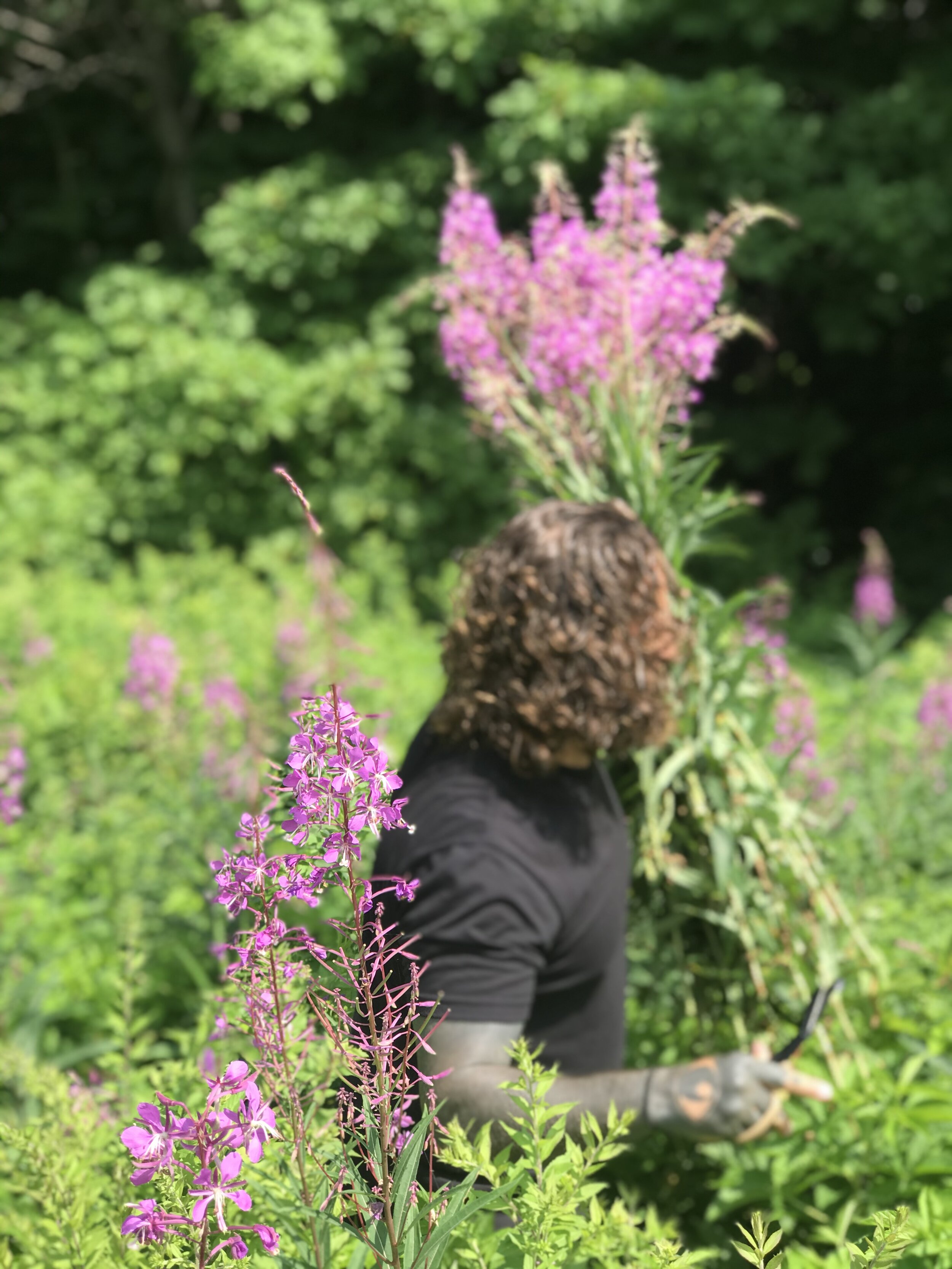Fireweed Tea
Gathering fireweed (Epilobium angustifolium) at the peak of its bloom.
As I write, I’m sipping a tea made from its leaves and flowers, areal parts of the plant that I fermented for several days before grinding and drying (a tip from our friend Ben Belty of Wild Food Warehouse).
The research on this plant — both in vitro and in vivo — is astonishing. Like many plants, it demonstrates antioxidant, antimicrobial, and anti-inflammatory activity but it’s also cytotoxic and anti-proliferative — meaning it has activity against certain cancer cells.
Additionally, studies have revealed its anti-aging and photo-protective properties (think “works like a sunscreen”), and that it helps to modulate the immune system too.
Perhaps most importantly, it acts as a 5-alpha reductase inhibitor, helping reduce the conversion of testosterone to dihydrotestosterone (DHT) which has been linked to hair loss, benign prostate hyperplasia (BPH), and may play a role in prostate cancer.
Preliminary research indicates fireweed is an excellent herbal candidate for men age 40 and over, both in the treatment of andropause and BPH and prophylactically against prostate cancer.
Check out some of the studies here:
Fireweed (Epilobium angustifolium L.): botany, phytochemistry and traditional uses. A review
Prior to the very recent chemical medicine era and its accompanying highly domesticated, medicine-deficient dietary plant regime, all humans would have been eating plants rich in a diversity of medicinal compounds. The lack of phytochemistry in the modern human diet could be described as a widespread plant medicine deficiency.
To overcome this lack of medicine, modern people “supplement” with pharmaceuticals — the majority of which are, in some way, derived from plants. These drugs often exist in chemical isolation from their naturally synergistic or inhibitory molecular neighbors, are in concentrations that are too high, and come with unintended consequences we kindly call “side-effects”.
I reserve a roll for the pharmaceutical “nuclear option” but prefer the gentle prophylaxis of plant medicine whenever possible.
Plants aren’t weak, primitive versions of modern medicines. They’re sophisticated biological entities whose properties and uses we’re only barely beginning to understand.



